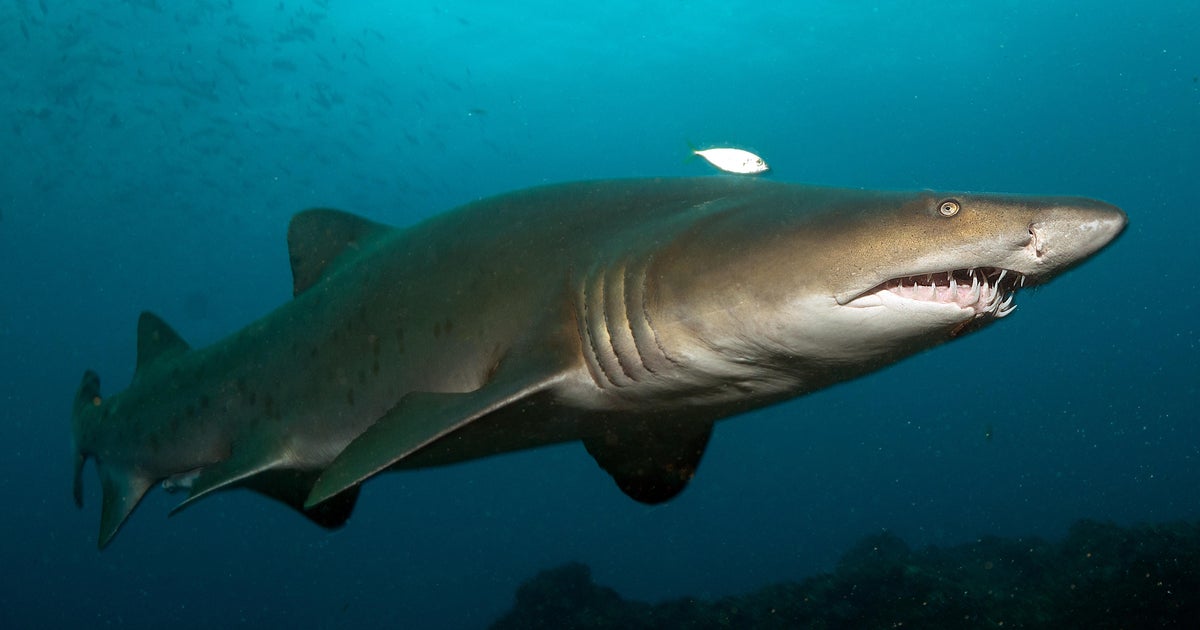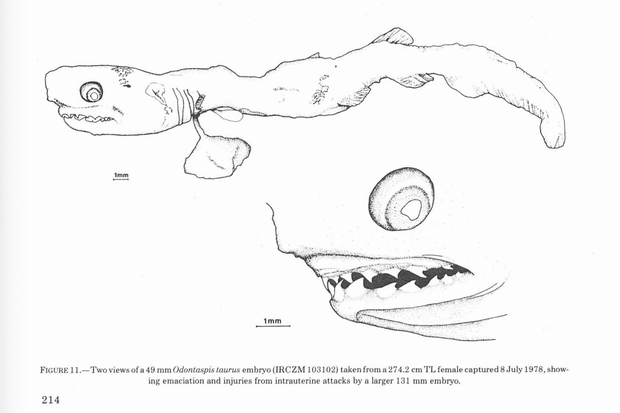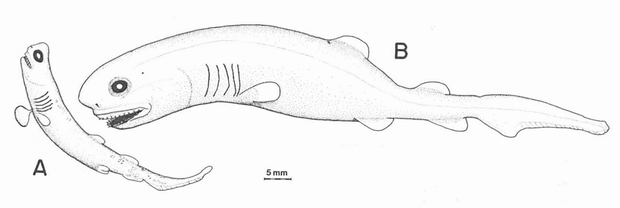CBS News
Summer of 2023 was the hottest in 2,000 years in some parts of the world, researchers say

Last summer’s sweltering heat broke more than city or regional or even national records. In what they call an “alarming finding,” scientists say that in the Northern Hemisphere, the summer of 2023 was the hottest in 2,000 years.
Global data already showed that last summer was the hottest on record. Copernicus, the European Union’s climate change observation organization, made that determination But a new study, published in Nature on Tuesday, looked even further back using both observed and reconstructed temperatures from centuries past.
And they found the heat was “unparalleled,” the researchers said.
According to their findings, the Northern Hemisphere experienced its hottest summer over the past 2,000 years by more than 0.5 degrees Celsius.
Study co-author Ulf Büntgen, from the University of Cambridge, said in a press release that last year was “exceptionally hot,” but that the true extent of that heat is visible when looking back at the historical record.
“When you look at the long sweep of history, you can see just how dramatic recent global warming is,” Büntgen said, “…and this trend will continue unless we reduce greenhouse gas emissions dramatically.”
The study also compared the temperatures of June, July and August in 2023 to those in the same months of 536 CE — the year one historian dubbed “the beginning of one of the worst periods to be alive, if not the worst year,” as it launched the coldest decade in millennia due to major volcanic eruptions. The difference from that coldest summer to the recent hottest one was 3.93 degrees Celsius.
When it comes to climate change, some people argue that the climate is constantly changing, as seen in the cold period that was kickstarted in 536 CE. But lead author Jan Esper, from the Johannes Gutenberg University Mainz in Germany, said that while that’s true, it’s the continued emission of greenhouse gases that really make a difference. Burning fossil fuels, such as oil and coal, releases a set of gases that trap the sun’s heat in the atmosphere, steadily raising average temperatures. When that’s paired with natural weather events like El Niño, which occurs when surface temperatures warm up over the Pacific, it only amplifies the impact.
“We end up with longer and more severe heat waves and extended periods of drought,” Esper said. “When you look at the big picture, it shows just how urgent it is that we reduce greenhouse gas emissions immediately.”
Experts have long warned that the world needs to take action to try to limit global warming to 1.5 degrees Celsius compared to pre-industrial times. Beyond that, the impacts of rising temperatures, including more frequent and intense droughts, hurricanes and floods, are expected to substantially worsen and drive global migrations, food scarcity and other issues.
But based on the observational record, researchers in this study found that the Northern Hemisphere may have already surpassed that. They found that temperatures in the hemisphere last summer were 2.07 degrees Celsius warmer than the average temperatures between 1850 and 1900.
“This alarming finding not only demonstrates that 2023 saw the warmest ever recorded summer across the [Northern Hemisphere] extra-tropics, but also that the 2015 Paris Agreement to constrain warming globally to 1.5 ºC has already been superseded at this limited spatial scale,” the study says.
In their research, the scientists found “inconsistencies” and uncertainties in the baseline temperatures that experts have been using to track temperature rise. Those issues were largely due to a lack of station records in more remote areas of the world and “inadequately sheltered thermometers,” researchers said.
Based on their own studies, they found that it was actually cooler in pre-industrial times than what was thought when accounting for extended cold periods. With that in consideration, they found the difference in temperatures between that time and last summer was even greater, at 2.20 degrees Celsius.
Researchers did note that their findings are largely based on temperatures in the Northern Hemisphere alone, as data for the Southern Hemisphere was sparse for the time periods they analyzed. They also said that the region responds differently to climate change because oceans are more prevalent in the southern half of the globe.
Despite the inability to develop fully worldwide temperature reconstructions and analysis, the researchers said their study “clearly demonstrates the unparalleled nature of present-day warmth at large spatial scales and reinforces calls for immediate action towards net zero emissions.”
The paper comes as the planet continues to see back-to-back months of heat records with deadly consequences. Weather experts have warned that this summer could be just as scorching as the last, with above-normal temperatures expected across the majority of the U.S.
CBS News
These cannibal baby sharks eat their siblings in the womb

Watch CBS News
Be the first to know
Get browser notifications for breaking news, live events, and exclusive reporting.
CBS News
What will happen to the price of gold if inflation hits 2%?

Getty Images
With rampant inflation over the past couple of years, the Federal Reserve quickly raised interest rates and has held them steady for the past year. Meanwhile, gold prices have been strong recently, with the price of gold per ounce hitting a record of over $2,400 in May. Although gold prices have come down slightly since then, they’re still up over 20% in the past year. Meanwhile, inflation has been showing signs of moderating recently too, although it could still be a while until it reaches the Fed’s 2% target.
If that happens, what could it mean for the price of gold? In some ways, high inflation could help the price of gold, as the precious metal is often purchased to try to hedge against inflation.
See how much a gold investment could cost you here now.
What will happen to the price of gold if inflation hits 2%?
Inflation is only one of multiple factors that can (and have) shaped the price of gold. So, even if it falls, gold could still rise in value for other reasons.
At the same time, high interest rates that are used to try to tame inflation can temper the price of gold, as high interest rates give investors an attractive option for essentially risk-free returns, like by buying Treasuries or even keeping money in a high-yield savings account.
So, some think that gold prices could fall as inflation drops to 2%.
“If and when that occurs, that could potentially deter some demand in gold and might lower the price,” says Alex Ebkarian, COO and co-founder of Allegiance Gold, a gold investing company.
“However, it’s a mistake to just look at the Fed’s reported inflation because it only measures year over year. Looking at the last three-year cumulative compound impact of inflation continues to be evident at the grocery stores and reflective on the price increase of gold,” he adds.
So, in that sense, with gold often being seen as a store of value, gold prices could potentially remain strong even if inflation hits 2%, at least in the beginning of that low inflation period.
Learn more about investing in gold during today’s inflationary cycle now.
Other considerations
Although there’s a case to be made in both directions in terms of how lower inflation could affect the price of gold, many experts see other factors being bigger drivers.
“The price of gold does not follow the inflation rate closely over the short to medium term. Thus, even if the Fed brings inflation down to 2%, there is no way of determining the behavior of the price of gold,” says Roger D. Silk, Ph.D., founder and CEO at Sterling Foundation Management, a wealth management company.
Instead, the price of gold might be influenced by broader economic and geopolitical factors, beyond just inflation.
Some investors, for example, turn to gold as a counter to the dollar, which could potentially weaken due to large government deficits that have been running since fiscal year 2002 across presidential administrations from both parties.
“Considering the current debt level and overall cost of interest expense and on-going de-dollarization movement, and the volatility nature of the market, coupled with some early signs of weaknesses in banks lead by the commercial real estate sector, I expect the reported taming of inflation would have a neutral impact on gold,” says Ebkarian.
Meanwhile, “other forces such as gold’s no-default risk, historical positioning, liquid nature and performance during times of crisis attributes are attracting new strategic investors that are more interested in ownership rather than exposure,” he adds.
The bottom line
At first glance, inflation might seem to move the price of gold, but many other factors are also involved. Thus, if and when the US reaches the Fed’s 2% target, that does not necessarily mean that gold prices will move up or down, as other factors such as government deficits and political instability around the world could influence gold investors who are looking to diversify.
CBS News
These cannibal baby sharks eat their siblings in the womb – and sketches show just how gruesome it can be

As adults, sand tiger sharks are known for being relatively non-aggressive. But as babies, these animals engage in a cannibalistic war with dozens of siblings in which only one survives.
It’s all part of a natural occurrence known as intrauterine cannibalism. Sand tiger sharks are perhaps one of the most well-known species in which this occurs. These sharks are ovoviviparous, meaning that their offspring grow in eggs in the sharks’ uteri until they hatch, at which point, they emerge into the ocean.
“It is survival of the fittest. The strongest one will emerge,” Lizeth Webster, curator of fish and invertebrates at the Long Island Aquarium in New York told CBS News. “The healthiest one will absorb all of the nutrients, not leaving enough for the others, so it will consume others in the womb.”
NOAA/Reproduction and Embryonic Development of The Sand Tiger Shark, Odontaspis Taurus (Rafinesque)
Sand tiger sharks are known for having two uteri. In each one, a female shark will have between 16 and 23 fertilized eggs. But not long after they develop their teeth, the biggest and most advanced of the embryos that’s often the first to hatch will kill and eat all the siblings it shares a uterus with, as well as any leftover yolk sacs. After being in the womb for eight to nine months, two pups – one from each uterus – will make it out into the sea.
“That’s how we get apex predators,” Webster said. “The strongest will survive.”
NOAA/Reproduction and Embryonic Development of The Sand Tiger Shark, Odontaspis Taurus (Rafinesque)
Shark scientists have known about this process for decades. In research published in NOAA’s Fishery Bulletin in 1983, they even provided visual depictions of the process.
In one case, they observed “a large hatched embryo (100 mm) that had attacked and badly damaged (puncture wounds and torn gut) a 51 mm embryo. … It is possible that the 51 mm embryo had not hatched prior to the attack.”
NOAA/Reproduction and Embryonic Development of The Sand Tiger Shark, Odontaspis Taurus (Rafinesque)
That cannibalism, however, meets a hard stop whenever the sharks are officially born. Sand tiger sharks, otherwise known as ragged-tooth sharks and grey nurse sharks, tend to eat herrings, eels, squids, crabs and lobsters, among other animals.
And no, humans aren’t on the list. The animals are known for not being aggressive toward humans, although they will become defensive if necessary. Once they grow, Webster described the animals as “calm.”
“Usually in the wild, they swim in large packs,” she said. “…When they’re in large groups like that they tend to be a lot calmer because they do have to swim in unison with other sharks. They just look like they’re floating and they’re calm.”
And while eating their siblings does help ensure that strong pups are born, it also makes it difficult for the species to survive.
The sharks, which can grow to be up to 10 feet and 500 pounds, according to the Long Island Aquarium, have one of the lowest reproductive rates among all shark species. According to the Aquarium of the Pacific, they only give birth every two years. And that poses a major problem considering the species has reached critically endangered status.
According to the IUCN Red List, populations have been decreasing worldwide, with the Mediterranean population being “locally possibly extinct,” as there have been no records of the shark in the area since 2008. Overall, researchers with the group believe the species has seen a more than 80% decline over the past 74 years “due to levels of exploitation.” Urban and industrial development, overfishing, climate change and severe weather impacting their habitats remain the biggest threats to the species.













